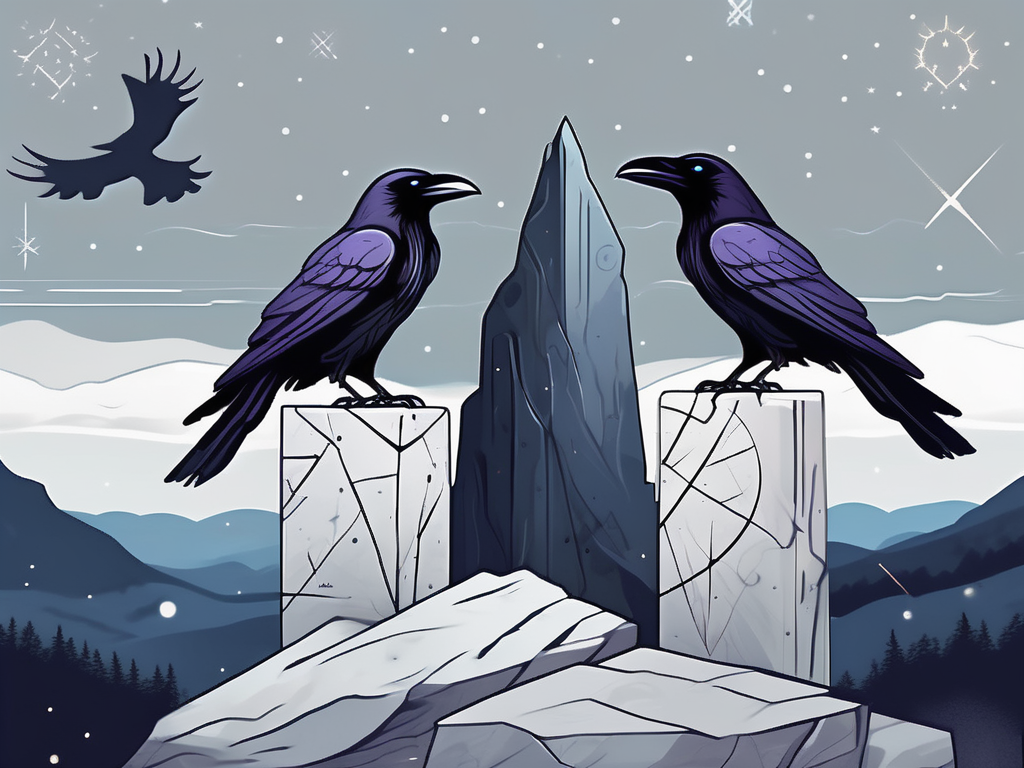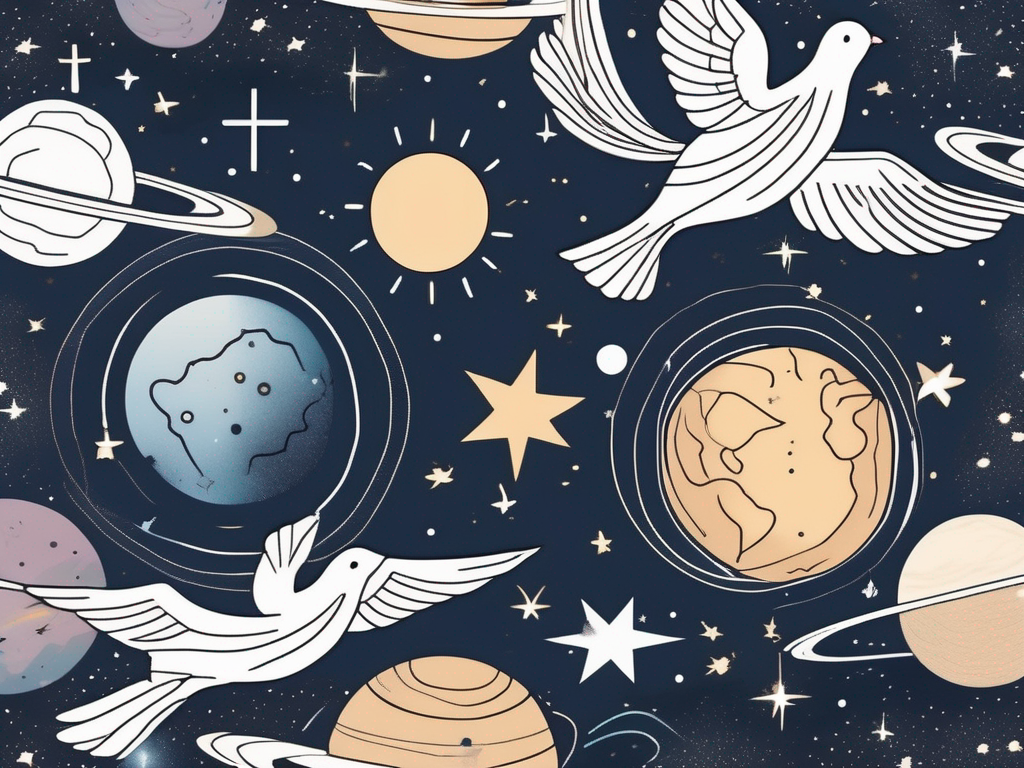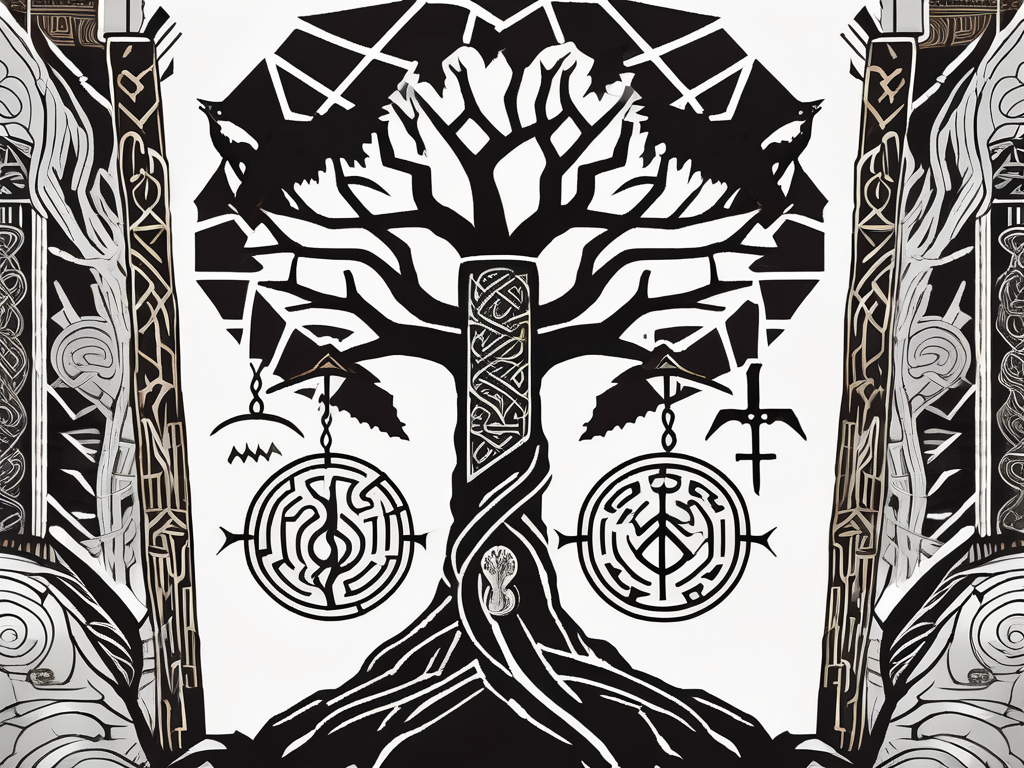Ravens have long held a captivating place in mythology, and few mythological systems have given these intelligent and mysterious birds as much prominence as Norse mythology. In the rich tapestry of ancient Norse beliefs, ravens played a multifaceted role that encompassed symbolism, spirituality, and even the creation of the world itself. Let’s delve into the enchanting realm of Norse mythology and explore the captivating role of ravens within it.
Understanding Norse Mythology
Before we immerse ourselves in the beguiling world of Norse mythology, let’s take a moment to understand its origins and key figures. Norse mythology, which originated in Scandinavia during the Viking Age, was a complex system of beliefs that shaped the worldview of the Norse people. It encompassed a wide range of deities, heroes, and mythical creatures that played vital roles in Norse cosmology.
The Norse people, known for their seafaring prowess and warrior culture, held a deep reverence for the natural world and its forces. They believed that the gods and goddesses controlled these forces, and by understanding and appeasing them, they could ensure their own prosperity and protection.
Like many ancient mythologies, the origins of Norse mythology are embedded in the mists of time. It evolved from the earlier Germanic belief systems and was influenced by a fusion of Scandinavian, Germanic, and continental Germanic folklore and traditions. The Norse people, with their rich oral tradition, passed down these myths and legends from generation to generation.
The stories of Norse mythology were not only a means of entertainment but also served as a way to explain the natural phenomena and human experiences that the Norse people encountered. These tales provided a framework for understanding the world and their place within it.
The Origins of Norse Mythology
As the Norse people ventured out from their homelands and interacted with other cultures, their mythology absorbed new elements and underwent changes. The Viking Age, with its extensive trade networks and exploration, brought new ideas and stories to the Norse pantheon.
One of the key influences on Norse mythology was the contact with the Romans and their pantheon of gods. The Norse people incorporated some of these Roman deities into their own mythology, adapting them to fit their own cultural context.
Another significant influence on Norse mythology came from the Celts, who inhabited parts of what is now Scotland and Ireland. The Norse people encountered Celtic myths and legends during their raids and conquests, and these stories found their way into the rich tapestry of Norse mythology.
Key Figures in Norse Mythology
Norse mythology is populated with a diverse pantheon of gods and goddesses, each with their own unique roles and characteristics. Among the most prominent figures are Odin, Thor, Loki, and Freya. These deities, along with countless others, embodied the natural forces and aspects of life that the Norse people revered and relied upon.
Odin, the Allfather and ruler of Asgard, was the god of wisdom, war, and magic. He was known for his insatiable thirst for knowledge and his ability to see into the future. Odin’s iconic attribute was his one-eyed appearance, having sacrificed an eye in exchange for wisdom.
Thor, the mighty god of thunder and lightning, was the protector of both gods and humans. He wielded the powerful hammer Mjolnir and was known for his incredible strength and bravery. Thor was often depicted as a red-bearded warrior, ready to defend the realms from any threat.
Loki, the trickster god, was both loved and feared by the Norse gods. Known for his cunning and shape-shifting abilities, Loki often caused mischief and chaos among the gods. Despite his mischievous nature, Loki played a crucial role in many of the Norse myths, sometimes helping the gods and other times causing their downfall.
Freya, the goddess of love, beauty, and fertility, was one of the most revered goddesses in Norse mythology. She was associated with desire, passion, and the cycle of life. Freya was often depicted as a powerful and independent woman, who possessed the ability to shape the destinies of both gods and humans.
These key figures, along with the myriad of other gods and goddesses, heroes and mythical creatures, form the intricate tapestry of Norse mythology. Each character brings their own stories and lessons, reflecting the values and beliefs of the Norse people.
The Symbolism of Ravens in Various Cultures
Before we focus specifically on ravens’ significance in Norse mythology, it’s worth exploring the broader symbolism of these enigmatic birds in different cultures and mythologies. Across various ancient civilizations, including Celtic and Native American cultures, ravens held important symbolic meanings.
Let’s delve deeper into the symbolism of ravens in Celtic mythology. In Celtic folklore, ravens were often associated with divination and prophecy. Their appearance was believed to foretell significant events, and they were often considered wise creatures with a deep connection to the spiritual world. The Celts saw ravens as messengers from the Otherworld, capable of delivering important messages from the gods. These birds were also associated with the Celtic goddess Morrigan, who was often depicted accompanied by ravens. The Celts believed that the presence of ravens signified the presence of the divine and that their calls carried secret knowledge.
Ravens in Native American Folklore
Similarly, Native American folklore attributed great spiritual significance to ravens. Among many tribes, ravens were seen as tricksters and shape-shifters, capable of both mischief and profound wisdom. They were revered as messengers between the mortal realm and the spiritual realm. The Native Americans believed that ravens possessed the ability to transform into different forms, allowing them to move between worlds and communicate with the spirits. These birds were often associated with creation stories and were believed to have played a role in shaping the world. In some tribes, ravens were considered sacred and were even believed to be the creators of the sun, moon, and stars.
As we can see, ravens have captivated the imaginations of different cultures throughout history. Their symbolism goes beyond their physical appearance, representing a connection between the earthly and the divine, between the mortal and the spiritual. Whether as messengers, tricksters, or wise beings, ravens continue to intrigue and inspire us with their mysterious nature.
The Significance of Ravens in Norse Mythology
Now, let’s explore the central role that ravens played in Norse mythology. The Norse people viewed ravens as sacred birds, closely associated with the chief deity Odin and several pivotal events in their mythology.
Ravens and the Norse God Odin
In Norse mythology, Odin, the All-Father and ruler of the gods, had two ravens as his constant companions. Known as Huginn and Muninn, meaning “thought” and “memory” respectively, these ravens served as Odin’s messengers and scouts. According to legend, every morning, Odin would release his ravens to fly across the world, gathering information and returning to whisper their findings into his ear.
The Role of Ravens in Norse Creation Myth
In addition to their connection with Odin, ravens also played a crucial role in the Norse creation myth. According to Norse mythology, before the world was formed, there was a vast void known as Ginnungagap. It was within this void that the primordial giant Ymir, the progenitor of all life, slumbered. As the gods began crafting the world, two ravens consumed the flesh of Ymir, allowing the world to take shape from his remains.
The Influence of Norse Mythology on Modern Culture
The enduring legacy of Norse mythology extends far beyond the ancient Norse civilization. Its captivating tales and symbolism continue to inspire and shape modern culture in various forms.
Norse Mythology in Literature and Film
Countless authors, from J.R.R. Tolkien to Neil Gaiman, have drawn inspiration from Norse mythology in their works. The heroic sagas and mythical creatures have provided fertile ground for storytelling, helping to create iconic characters and imaginative worlds that have captured the imaginations of millions.
The Enduring Symbolism of Ravens Today
While our fascination with ravens may have evolved over time, their symbolic importance remains potent. Ravens continue to be associated with mystery, intelligence, and wisdom. Their presence in art, literature, and popular culture serves as a constant reminder of their enduring allure.
The Mystery and Allure of Ravens: A Conclusion
As we wrap up our journey into the enchanting world of Norse mythology and the captivating role of ravens within it, one question remains—why do ravens continue to fascinate us? Perhaps it is their sharp intellect and enigmatic nature that draws us in. Or maybe it’s the ancient stories and myths that have woven them into the fabric of our cultural heritage. Whatever the reason, one thing is certain—ravens, with their enduring symbolism and rich mythological roles, will continue to captivate us for generations to come.
Why Ravens Continue to Fascinate
The allure of ravens lies in their intelligence and adaptability. These birds have displayed remarkable problem-solving abilities and even a sense of humor. Their ability to mimic sounds and their playful antics have made them a source of intrigue and delight for humans throughout history.
The Lasting Impact of Norse Mythology
Norse mythology’s influence reaches far beyond ravens. It has left an indelible mark on our language, with days of the week named after Norse gods, such as Odin and Thor. Moreover, its themes of heroism, fate, and the eternal struggle between light and darkness continue to resonate in our modern lives—reminding us of the timeless power of ancient myths.












